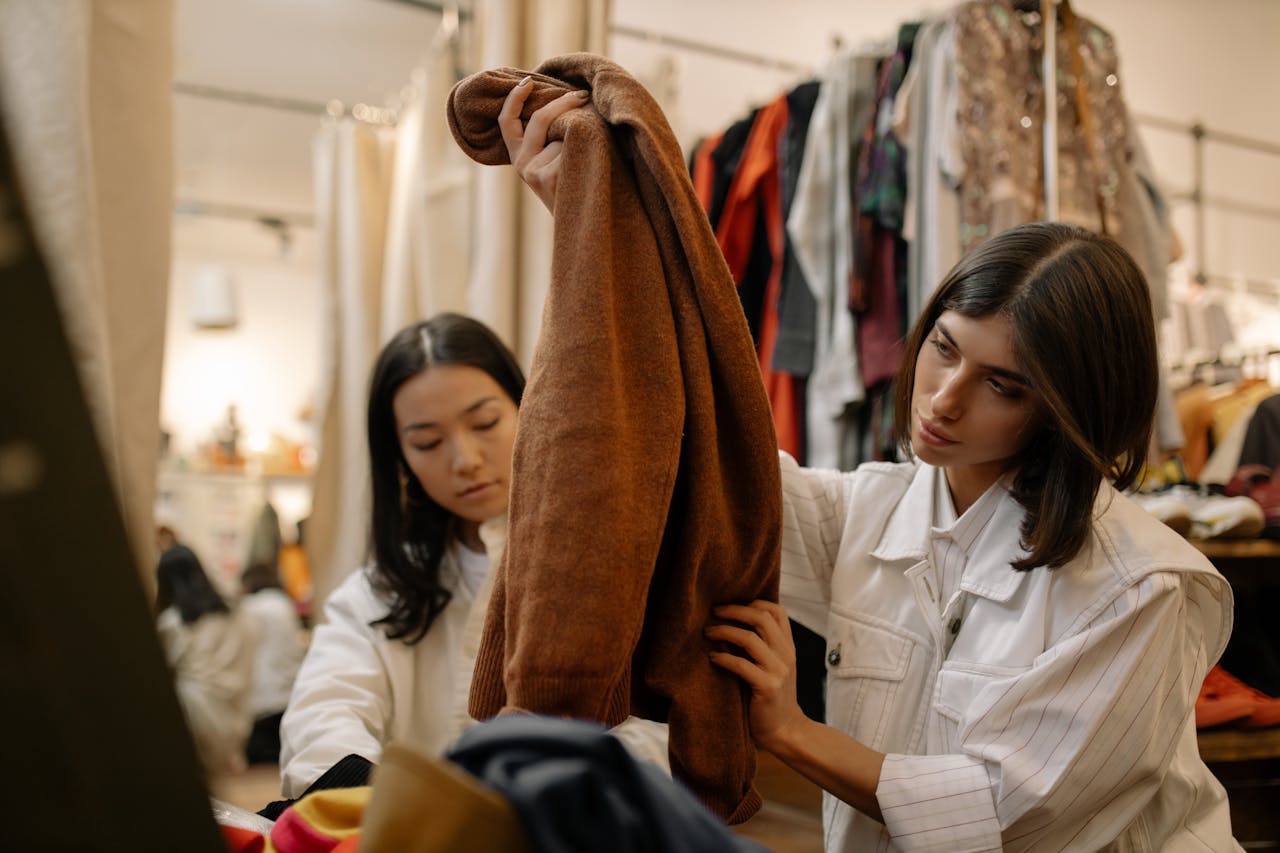By Primrose Freestone, University of Leicester; The Conversation

While it’s difficult to say how great your risk of actually contracting an illness from secondhand clothes is (as no study has been done to date), people who are immunocompromised are probably at the greatest risk. (Pexels Photo)
Demand for secondhand and vintage clothing has surged within the last few years. Pre-owned fashion is seen by many consumers as a cheaper, more environmentally friendly way to expand their wardrobe.
But as excited as you might be to wear your next secondhand purchase, it’s important you disinfect it properly first. This is because clothing can actually be an important reservoir for many infectious diseases.
The skin is naturally coated in millions of bacteria, fungi and viruses, collectively known as the skin microbiome. This means every item of clothing we wear comes into close contact with these microbes.
Many of the microbes that regularly call the skin microbiome home include the bacteria Staphylococcus (which causes staph infections), Streptococcus (the bacteria behind strep A), fungi such as Candida (the species of yeast that most commonly causes thrush) and viruses such as the Human papillomavirus (which causes HPV).
Each person’s skin microbiome is uniquely adapted to them. What’s normal and harmless for one person can be disease-causing to another.
Infection risk of used clothes
Clothing is a well-known carrier of many disease-causing pathogens. This means that germs from the original clothes owner’s unique skin microbiome could still be found on secondhand clothes if the items weren’t cleaned prior to selling. It also means that any infections or pathogens they might have had when they last wore the clothes could still be found there.
Research has found clothing can harbour many infectious pathogens – including germs such as Staphylococcus aureus (which causes skin and blood infections), bacteria such as Salmonella, E coli, norovirus and rotavirus (which can cause fever, vomiting and diarrhoea) and the fungi that can cause athlete’s foot and ringworm.
A survey of secondhand clothing specifically, which was being sold in a market in Pakistan, detected the presence of Bacillus subtilus and Staphylococcus aureus in many of the samples taken. These bacteria can cause skin and blood infections. Parasites which can cause skin infections (such as dermatitis and scabies) have also been found on secondhand clothing.
The skin’s microbes can live on the amino acids in sweat, as well as the sebaceous oil released from hair follicles and the proteins of skin cells, all of which are deposited into clothes when we wear them.
Not only that, but research shows many pathogenic germs – such as E coli, Staphylococcus aureus and Streptococcus pyogenes – can survive on clothes for months when kept at room temperature. Germs on cotton or mixed-fibre clothes stayed alive for up to 90 days. But on polyester fabrics, these germs lived as long as 200 days. Most bacterial species survived better in the fabrics when the air humidity was high. This suggests that to minimise germ growth, clothes should be stored in a dry environment.
While it’s difficult to say how great your risk of actually contracting an illness from secondhand clothes is (as no study has been done to date), people who are immunocompromised are probably at the greatest risk. If you have an impaired immune system, you should take extra care before wearing secondhand purchases.
How to properly wash second-hand clothes
Most microbes need water to grow. Skin areas that tend to get moist – such as the armpits, feet and genital areas – tend to have the highest number and most diverse species of microbes. Fabric that has come in contact with these regions will be the most contaminated. Alongside bodily fluids, clothes can also become contaminated with traces of food debris. This could also act as a source of growth for any bacteria or fungi present.
This is why washing secondhand clothes is so important for preventing germ growth and reducing infection risk. One study of secondhand clothing contaminated with the scabies parasite even found that washing clothes eliminated all of the parasites present.
It’s recommended that you wash newly purchased secondhand clothes with detergent at a temperature of around 60°C. This will not only clean any dirt from the clothes, but will also remove germs and inactivate pathogens.
Cold water will not work as well to get rid of pathogens within clothing. So if a high-temperature wash isn’t possible, then use a laundry disinfectant to kill any germs present.
You should try to initially wash secondhand clothes separately from regular laundry to reduce cross contamination of clothing. Soaking the secondhand clothing in a separate bowl of hand-hot (not boiling) water with antibacterial laundry detergent for two to three hours should eliminate any pathogens present. Follow with a regular machine wash.
To be even more sure you eliminate any remaining germs, a hot tumble dryer or a steam iron treatment (again, around 60°C if your fabric allows it) is highly effective at killing bacteria, viruses and parasite eggs.
Although many secondhand clothes sellers say they wash clothing before selling, you can never be too sure. This is why it’s a good idea to wash any secondhand clothes you buy regardless. It’s probably also a good idea to wash any new clothes you buy before wearing as well.![]()
Primrose Freestone, Senior Lecturer in Clinical Microbiology, University of Leicester
This article is republished from The Conversation under a Creative Commons license. Read the original article.





















